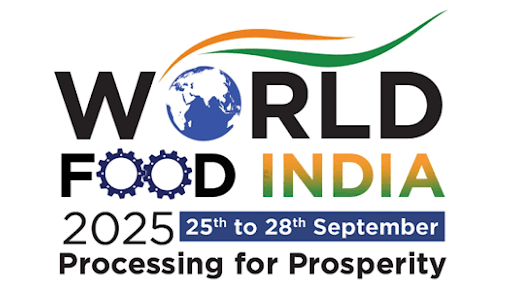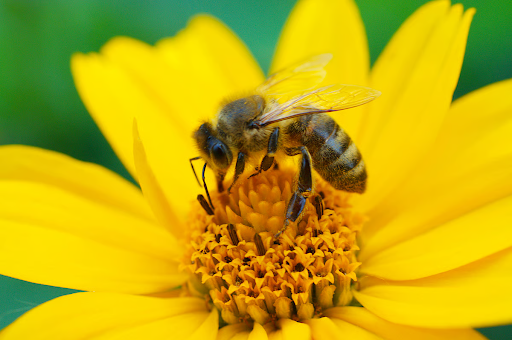
Disclaimer: Copyright infringement is not intended.
Context:
The Union Cabinet approved the Rs 2,817-crore Digital Agriculture Mission for the creation of Digital Public Infrastructure (DPI) in the farm sector.
The DPI Mission
It uses digital solutions such as the Aadhaar unique ID, the DigiLocker document folder, the eSign electronic signature service, the unified payments interface (UPI) instant money transfer protocol,etc. in agriculture.
Three major components of DPI:
- AgriStack,
- Krishi Decision Support System (DSS), and
- Soil Profile Maps.
- Each of these DPI components will provide solutions that will allow farmers to access and avail of various services.
- The mission also aims to create a tech-based ecosystem, the Digital General Crop Estimation Survey (DGCES), which will provide accurate estimates of agricultural production.

Funding
Rs 2,817 crore, of which Rs 1,940 crore will be provided by the Centre, and the rest by the states and Union Territories (UTs).
Mission life
The Mission will be rolled out across the country over the next two years, until 2025-26.
Implementation
- The Agriculture Ministry is in the process of signing Memorandums of Understanding (MoUs) with state governments for the creation and implementation of the DPI for agriculture. Nineteen states have come on board so far.
- The basic IT infrastructure for implementing AgriStack, has been developed and tested on a pilot basis.
(i) AgriStack
It consists of three foundational agri-sector registries or databases:
- Farmers’ Registry,
- Geo-referenced Village Maps, and
- Crop Sown Registry, all of which will be created and maintained by state/ UT governments.
FARMERS’ REGISTRY:
- Farmers will be given a digital identity (‘Farmer ID’) similar to Aadhaar, which will be linked dynamically to records of land, ownership of livestock, crops sown, demographic details, family details, schemes and benefits availed, etc.
- Pilots projects for the creation of Farmer IDs have been carried out in six districts — Farrukhabad (Uttar Pradesh), Gandhinagar (Gujarat), Beed (Maharashtra), Yamuna Nagar (Haryana), Fatehgarh Sahib (Punjab), and Virudhunagar (Tamil Nadu), another source said.
Government's target:
The government aims to create digital identities for 11 crore farmers, 6 crore of whom will be covered in the current (2024-25) financial year, another 3 crore in 2025-26, and the remaining 2 crore farmers in 2026-27.
Funding of registry:
- In July 2024, Rs 5,000 crore was earmarked for incentives for states to create the Farmers’ Registry under the Scheme for Special Assistance to States for Capital Investment, 2024-25.
- This amount is separate from the budgetary allocations made for the Digital Agriculture Mission.
CROP SOWN REGISTRY:
- This Registry will provide details of crops planted by farmers.
- The information will be recorded through mobile-based ground surveys in each crop season.
- A pilot Digital Crop Survey was conducted in 11 states in 2023-24 in order to develop the Crop Sown Registry.
Government’s target:
The government aims to launch the Digital Crop Survey across the nation over the next two years, covering 400 districts in the current (2024-25) financial year, and the remaining in FY 2025-26.
GEO-REFERENCED VILLAGE MAPS:
The maps will link geographic information on land records with their physical locations.
(ii) Krishi DSS
- The Krishi Decision Support System, will create a comprehensive geospatial system to unify remote sensing-based information on crops, soil, weather, and water resources, etc.
- This information will support crop map generation for identifying crop sown patterns, droughts/ flood monitoring, and technology-model-based yield assessment for settling crop insurance claims by farmers.
(iii) Soil Profile Maps
- Detailed Soil Profile Maps (on a 1:10,000 scale) of about 142 million hectares of agricultural land will be prepared.
- A detailed soil profile inventory of about 29 million ha has already been completed.
Digital General Crop Estimation Survey (DGCES)
●It is a nationwide initiative aimed at precisely assessing crop yields across a variety of crops. This program utilises a meticulously crafted survey methodology rooted in the principles of crop cutting experiments.
●The introduction of the GCES mobile application and portal has led to recording Crop Cutting Experiment (CCE) results directly from the field.
Advantages
Better crop yield estimation
●The DGCES will provide yield estimates based on scientifically designed crop-cutting experiments, which will be useful in making accurate estimates of agricultural production.
●This will improve the existing crop yield estimation system, and to make the data more robust, addressing concerns that are sometimes raised about the accuracy of India’s agriculture production estimates.
Improved efficiency and transparency:
●Better data will help government agencies make schemes and services such as paperless Minimum Support Price (MSP)-based procurement, crop insurance, and credit card-linked crop loans more efficient and transparent, and develop systems for the balanced use of fertilisers, the sources said.
Facilitate crop diversification and irrigation needs:
●The data will also help facilitate crop diversification and evaluate irrigation needs according to the crop and season.
|
Digital agriculture initiatives in India
India is making progress in digitising agriculture, with the government running several programs to increase farmer incomes and make agriculture smart and digital.
Some of the initiatives include:
Digital Agriculture Mission
Launched in 2021 by the Union Minister of Agriculture and Farmers Welfare, this mission focuses on digital agriculture.
Crop production forecast model
NITI Aayog and IBM have partnered to create a model that uses AI to provide farmers with real-time data and advice.
e-NAM
- National Agriculture Market (NAM) is a pan-India electronic trading portal launched on 14th April, 2016 completely funded by the Central Government and implemented by Small Farmers Agribusiness Consortium (SFAC).
- This initiative connects the domestic agricultural markets in India.
Blockchain technology
This technology could help ensure traceability and transparency throughout the supply chain. Niti Aayog is assessing the feasibility of its implementation at various stages.
Way ahead to ensure the success of digital agriculture in India:
- Affordability: Technologies should be affordable as the famer’s income in low in india. As per last “Situation Assessment Survey” conducted in 2012-13, Monthly Agricultural Household Income was estimated as Rs. 6426/- which increased to Rs. 10218/- as per the survey conducted in 2018-19.
- Ease of access: How easy it is for farmers to access the technology is important. Digital literacy, multilingualism, voice assistance are some way ahead.
- System maintenance: Systems should be easy to maintain to ensure their sustainability.
- Policy support: Government policies should be continuous with skilling, credit availability, loss damage, etc.
- Research and development: The research and development should be robust and ICAR and various agricultural labs such as soil health labs should be more empowered in this regard.
Conclusion
- According to the NITI Ayog research on artificial intelligence, agriculture must expand at a rate of 4 per cent or higher right now to maintain an annual growth rate of 8–10 per cent. Digitisation is crucial for achieving this level of success.
- The NITI Aayog predicted in a report that by 2025, AI in agriculture would be worth $ 2.6 Bn and rise at a pace of 22.5 percent Compound Annual Growth Rate (CAGR).
- AI currently helps farmers increase yield by assisting them in choosing better crops, hybrid seeds, and resource-efficient farming techniques. It is also utilised to improve farming productivity and accuracy to assist farmers in creating seasonal forecasting models.
Source
https://indianexpress.com/article/explained/big-plan-farms-2800-cr-digital-agriculture-mission-9546566/
https://gces.dac.gov.in/#/
https://www.investindia.gov.in/team-india-blogs/digitalisation-agriculture-india
https://pib.gov.in/PressReleaseIframePage.aspx?PRID=1909208#:~:text=Farmers'%20income%20is%20estimated%20through,survey%20conducted%20in%202018%2D19.

|
PRACTICE QUESTION
Q) Central Public Sector Undertakings are important building blocks of India’s economy. In this context analyse the socio-economic implications of granting Ratna status to government enterprises in India. ( 250 words)
|










